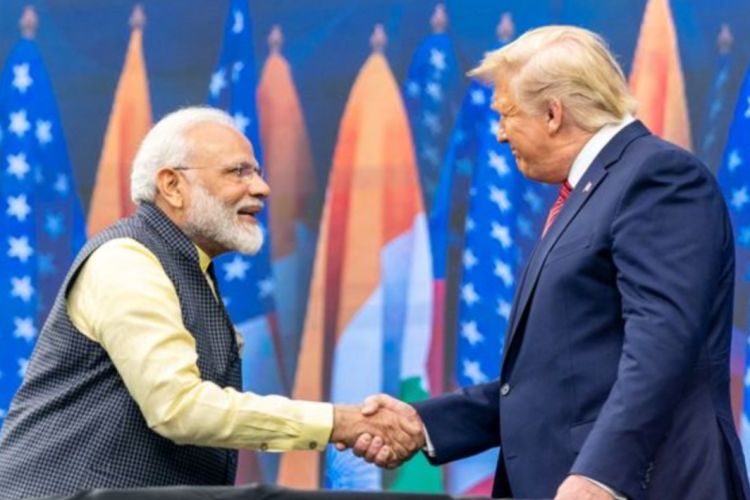
Trump 2.0 impact on India-US trade: RBI Governor Shaktikanta Das recently touched upon the challenges posed to the Indian economy by Donald Trump’s re-election as US President. Chief among these concerns is rising protectionism and the possibility of higher tariffs in the US. Trump’s second term is expected to escalate trade wars as the United States adopts a more inward-looking approach. While India is currently absent from Trump’s immediate tariff plans targeting countries like China, Mexico, and Canada, experts believe that Indian exports, particularly in critical sectors such as pharmaceuticals and IT services, may not escape unscathed for long.
Trump’s re-election has already sent shockwaves through Indian stock markets. Foreign portfolio investors (FPIs) have been withdrawing from debt and equity markets at record speed, leading to significant declines in market indices. For instance, the Sensex closed at 78,782 on November 5, while the rupee fell to Rs 84.11 against the dollar. The rupee’s depreciation continued, hitting a record low of Rs 84.50 last week.
READ | Supply chain finance: RBI tightens the reins on NBFCs
Although the Reserve Bank of India has intervened using its forex reserves of $658 billion (as of November 15) to curb volatility, the rupee remains under pressure. The situation has been further complicated by concerns over higher inflation in the US, driven by Trump’s fiscal policies, and limited interest rate cuts by the Federal Reserve, which could indirectly impact monetary policy in India.
The Trump effect on India
Donald Trump’s protectionist policies will create significant hurdles for bilateral trade and foreign direct investment (FDI). Known for his belief that high tariffs protect American interests, Trump has vowed to bring manufacturing back to the US, potentially offering large incentives to American companies to relocate. This could dampen global FDI flows, including those to India.
A recent SBI report highlights how Trump’s regulatory changes during his first term impacted Indian FDI inflows. Given that the US is the largest source of FDI for India, accounting for a significant portion of the $120 billion bilateral trade in FY24, any reduction in FDI could severely affect India’s economic growth.
Additionally, Trump has criticised India in the past for imposing high tariffs and manipulating its currency. He has referred to India as “an abuser” of import tariffs during his campaign. Trump may push India to lower its tariffs while simultaneously imposing higher duties on Indian goods like automobiles, textiles, pharmaceuticals, and wines. Such measures would render Indian exports less competitive in the US market, jeopardising revenue from America—India’s largest export partner.
Trump’s re-election may also pose challenges for Indian talent and IT services. During his first term, Trump tightened restrictions on outsourcing and H-1B visas, and these measures are likely to persist or intensify. This could adversely impact India’s IT sector, which depends heavily on the US market. Reduced outsourcing opportunities and stricter visa regulations may hinder Indian IT firms’ ability to hire skilled talent and sustain revenue growth.
Ripple effects on the global economy
While Trump’s protectionist measures look to bolster the American economy, they are not without risks. A report by HDFC Bank Treasury Research Desk warns that higher tariffs could lead to inflation in the US, reduce consumer spending, and harm manufacturers reliant on global imports. Moreover, widespread tariff impositions could trigger retaliatory measures from other countries, potentially slowing global economic growth, particularly in China and the Eurozone.
Trump’s policies also come at a time when the World Trade Organisation (WTO) is grappling with a breakdown of its dispute resolution mechanism, adding to fears of a global trade conflict. As the world’s largest economy turns inward, the risk of a global economic slowdown looms large.
Trump 2.0: Possible silver linings for India
Despite the challenges, Trump’s re-election could present some opportunities for India. Analysts believe that higher tariffs on Chinese goods might benefit Indian exporters, as US companies adopt a “China plus-one” strategy to diversify supply chains. Trump’s reshoring goals could lead to reduced dependence on Chinese manufacturing, opening doors for Indian industries in sectors like semiconductors and electronics.
Indian policymakers are cautiously observing Trump’s next moves. Optimism persists regarding the relationship shared by Prime Minister Modi and Trump, with hopes that their rapport could shield India from the brunt of Trump’s tariff policies. For now, India remains less vulnerable compared to other Asian economies due to its relatively lower export dependency.
However, as Trump’s presidency unfolds, India must prepare for potential disruptions in trade, FDI inflows, and the global economic order. Policymakers and industry leaders will need to adopt proactive measures to navigate this complex landscape while leveraging emerging opportunities.
